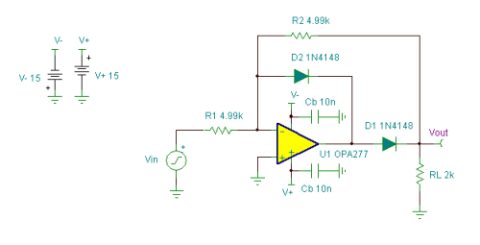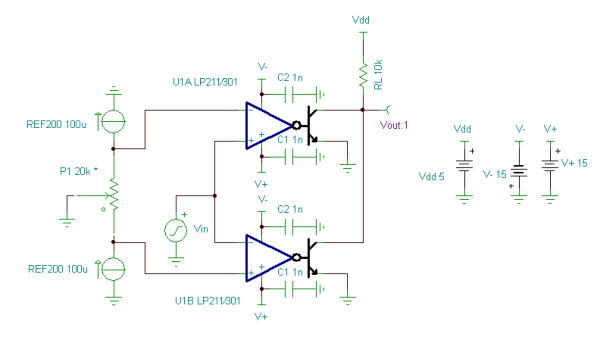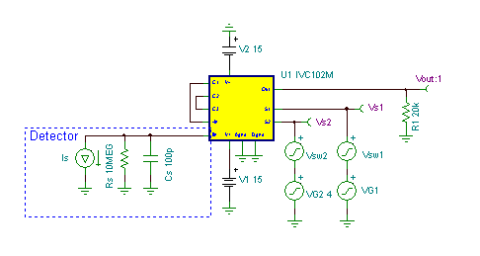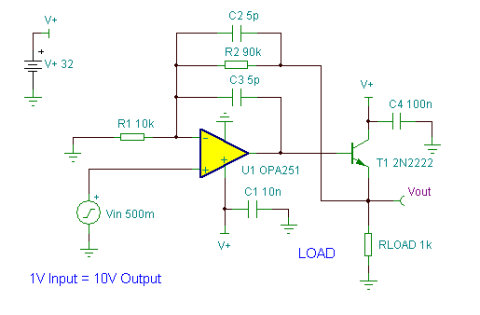Positive Output Precision Voltage Limiter
This circuit limits its output to a positive- going output only; negative output is clamped to ground. For negative inputs, D1 conducts and R2 provides negative feedback into U1’s summing junction. For positive inputs, D2 conducts and holds the summing junction to 0V. Thus the output across RL can only be positive. This characteristic is handy when driving single-supply amplifiers or unipolar A/D converters. For a negative output simply reverse D1 & D2. As shown, this circuit is a unity- gain inverter but it is also capable of providing voltage gain. Av = – 2 / R1. (Circuit is created by Neil P. Albaugh, TI – Tucson)
Positive Output Precision Voltage Limiter circuit:

Online Simulation of the Positive Output Precision Voltage Limiter Circuit
The great feature of the TINA circuit simulator that you can analyze this circuit immediately with TINACloud the online version of TINA. Of course you can also run this circuit in the off-line version of TINA.
Click here to invoke TINACloud and analyze the circuit yourself, or watch our tutorial video!
You can send this link to any TINACloud customers and they can immediatelly load it by a single click and then run using TINACloud.
Michael Koltai
www.tina.com




